If you want to hang Christmas lights outside but don’t have an outdoor outlet, don’t worry. You can still run your lights using other methods. In this article, we will discuss three ways how to run Christmas lights without outdoor outlet. We will also provide tips on choosing the proper method for your needs. So, we have you covered whether you are looking to save money or are just stuck with a lack of outlets!
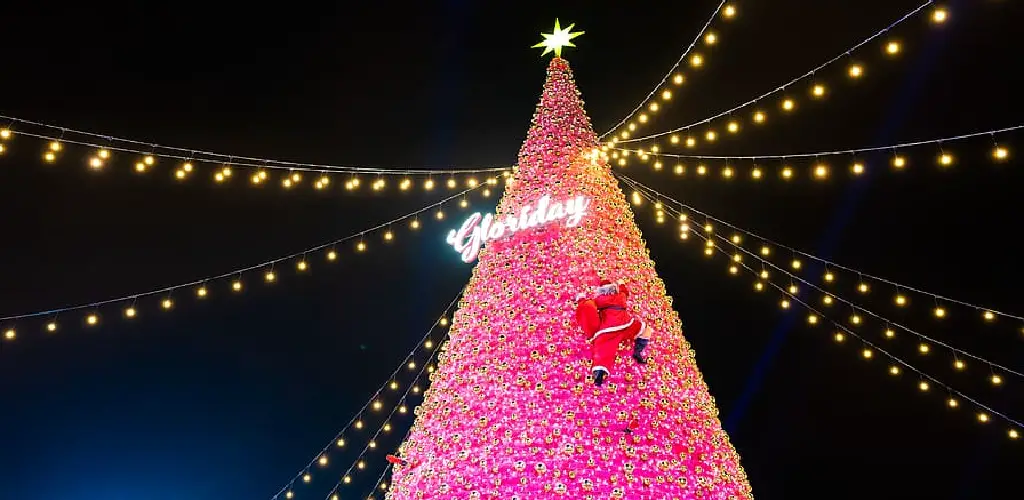
Christmas lights are a holiday staple. They are often used to decorate homes, businesses, and public spaces. While they are most commonly seen during the Christmas season, they can be used for other holidays and celebrations. Many people enjoy the festive look that Christmas lights bring, but setting up can be a hassle. Running your lights can be even more complicated if you don’t have an outdoor outlet.
Summary: Christmas is a time for family and friends to get together and celebrate. However, some people may not have access to an outdoor outlet to plug in their Christmas lights. Luckily, there are other ways to run your lights without an outlet. You can use a power strip, a battery pack, or a solar panel.
A Detailed Guide on How to Run Christmas Lights Without Outdoor Outlet
There are a few different ways to run your Christmas lights without an outdoor outlet. The best method for you will depend on your needs and the setup of your home.
Method 1. Use an Extension Cord
An extension cord is simply an electrical cord used to extend the reach of another cord. They come in various sizes, with the most common being 16 gauge and 14 gauge. Heavier-duty 12 gauge cords are also available, but they are not as expected. Extension cords are available at most hardware stores, home improvement stores, and online retailers.
Step 1
Choose an extension cord long enough to reach your indoor outlet to your desired outdoor location. If you are unsure of the length you need, err on caution and get a longer cord. Select an extension cord that is marked “outdoor” and is heavy duty.
Step 2
Plug one end of the extension cord into your indoor outlet. If you are using a power strip, plug the power strip into the outlet and plug the extension cord into the power strip.
Step 3
To use an extension cord outdoors, first run the cord to your desired location. Make sure the cord is not running through any areas where it could be damaged, such as under doors or through windows.
Step 4.
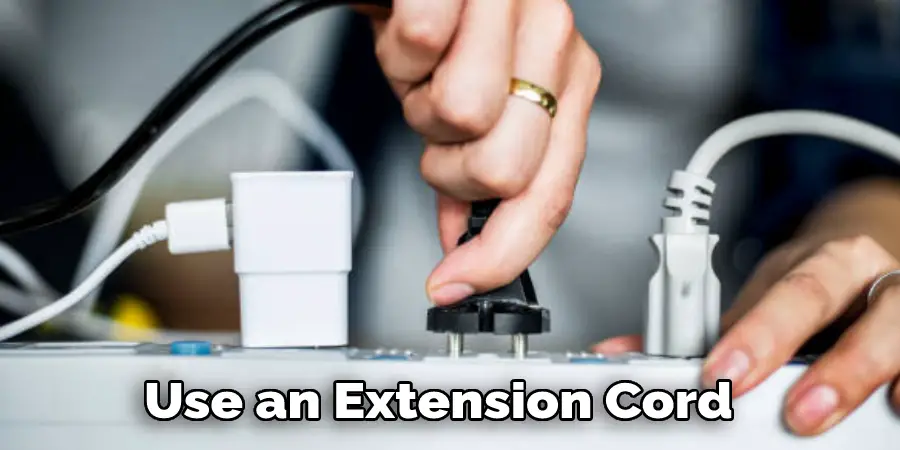
Plug in your Christmas lights to the extension cord. Enjoy your Christmas lights without having to worry about an outdoor outlet! These steps will help in how to run christmas lights without outdoor outlet.
Benefits:
- They are relatively inexpensive.
- They are easy to use.
- They are available in a variety of sizes.
Drawbacks:
- They can be a trip hazard.
- If not used correctly, they can cause electrical fires.
- They may not be allowed by your homeowner’s association or landlord.
Method 2. Use Battery Powered Lights
Battery-powered lights are lights that are powered by batteries instead of being plugged into an outlet. This makes them incredibly versatile and means that you can use them just about anywhere, including places where there is no outlet available.
Step 1:
To create the perfect ambiance, start by choosing the right lights. Battery-powered lights come in all sorts of shapes, sizes, and colors, so it’s essential to pick the ones that will work best for you. Consider things like the size of the area you need to cover, the type of look you’re going for, and how long you need the lights to last. With a little bit of planning, you can create the perfect mood for any occasion.
Step 2:
Once you’ve chosen your lights, it’s time to prepare the batteries. This may involve simply putting new batteries in the light string or charging up rechargeable batteries. Either way, make sure that the batteries are fresh and have plenty of power before proceeding.
String up the lights Now that you’ve prepared the batteries, it’s time to string up the lights. If you have a lot of experience with this, you may be able to do it in your head or at least remember where they go. If not, follow along and find out exactly where all the lights should go. Also, if you’re working on a ladder or some other high place, be sure to practice safety and have someone else around to make sure you don’t fall.
Step 3:
With the batteries in place, you can now hang up your lights. Start by attaching the string of lights to whatever surface you’ll be using them on. Please turn on the switch once they’re in place and enjoy your beautifully lit space!
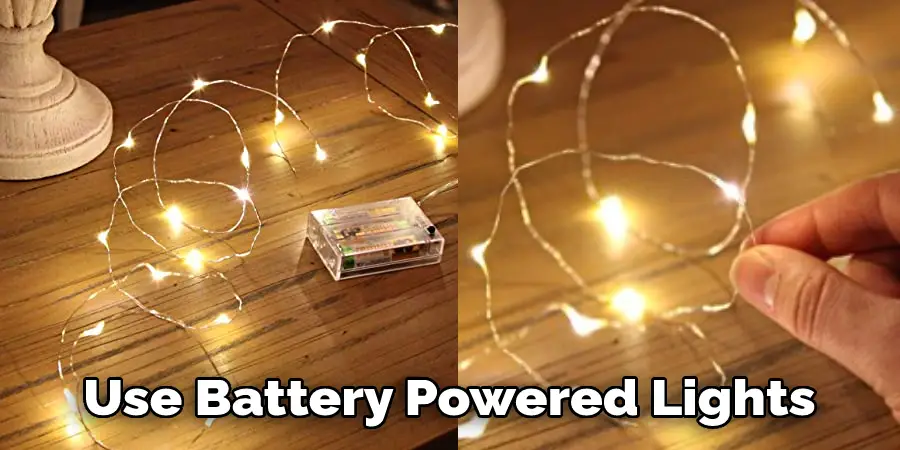
Tips
- If you’re using rechargeable batteries, make sure to charge them thoroughly before using them. This will help to ensure that they last as long as possible.
- You may want to consider investing in a timer for your lights. This will allow you to set them to come on and go off at specific times, which can help conserve battery power.
- To get the most out of your battery-powered lights, avoid using excessively long light strings. The longer the string, the more power it will use and the shorter the battery life.
- It’s always a good idea to have extra batteries on hand if your lights start to dim before you’re ready to take them down. Then, you can swap in a new set of batteries and keep the party going!
- Benefits:
- There are several advantages to using battery-powered lights instead of plug-in lights.
- First, they are much more versatile since you can put them anywhere. -Second, they are safer since there is no risk of electrical shock.
- Third, they are more energy efficient since they don’t rely on electricity to operate.
- Finally, they are more environmentally friendly since they don’t produce any emissions.
- Drawbacks:
- The main disadvantage of battery-powered lights is that they can be more expensive than plug-in lights.
- Additionally, they may not be as bright as plug-in lights and will need to be replaced more frequently.

Method 3. Use Solar Powered Lights
Solar-powered lights are a type of lighting that is powered by the sun. There are two main types of solar-powered lights: those that use photovoltaic cells to convert sunlight into electricity and those that use solar panels to collect sunlight and then convert it into heat energy. Solar-powered lights are becoming increasingly popular as people look for ways to reduce their carbon footprint and save money on their energy bills.
Step 1:
There are two main types of solar-powered lights: those that use photovoltaic cells to convert sunlight into electricity and those that use solar panels to collect sunlight and then convert it into heat energy. You will need to determine which type of solar-powered light is best for your needs before purchasing or installing any solar lighting.
Step 2:
Once you have determined the solar-powered light you need, you will need to purchase the correct solar lights. You will need to consider several different factors when purchasing solar lights, including the size of the light, the type of light (floodlight, spotlight, etc.), the intensity of the light, the battery life of the light, and the price.
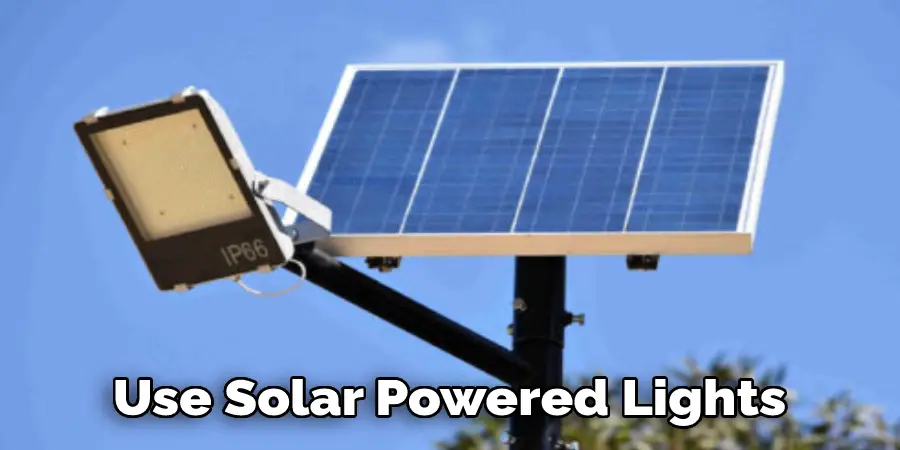
Step 3:
Once you have purchased the right solar-powered lights for your needs, you will need to install them. This process will vary depending on the type of solar light that you have purchased. If you install photovoltaic cells, you will need to attach them to your roof or another sunny spot in your yard. If you are installing solar panels, you will need to find a place in your yard that receives full sun exposure.
Step 4:
After installing your solar-powered lights, you can sit back and enjoy their beauty and functionality! Solar lights are a great way to save money on your energy bill, reduce your carbon footprint, and add beauty and style to your home.
Benefits:
- They are environmentally friendly. Solar-powered lights do not produce any emissions or pollutants, making them an excellent choice for those who want to reduce their impact on the environment.
- They are cost effective. Solar-powered lights can save you money on your energy bills, as you will not be using any electricity from the grid.
- They are easy to install. Anyone can easily install Solar-powered lights without professional help.
- They are reliable. Solar-powered lights are very reliable, as they do not rely on the grid for power.
Drawbacks:
- They require sunlight to work. Solar-powered lights will not work without sunlight, so they are not suitable for use in dark or cloudy conditions.
- They can be more expensive than traditional lights. Solar-powered lights can be more costly than conventional lights, although the savings on your energy bills may offset the initial cost.
Safety Precautions
As you probably know, water and electricity don’t mix. So, if you’re running your lights without an outdoor outlet, there are some extra safety precautions you’ll need to take. Here are a few tips:
- Use only weatherproof extension cords and light strings specifically made for outdoor use.
- Ensure all of your connections are secure and free of any moisture.
- Keep your lights away from puddles, pools of water, or any other sources of moisture.
- If you’re using battery-operated lights, be sure to use fresh batteries and check them regularly.
- Never leave your lights unattended. Be sure to turn them off when you go to bed or leave the house.
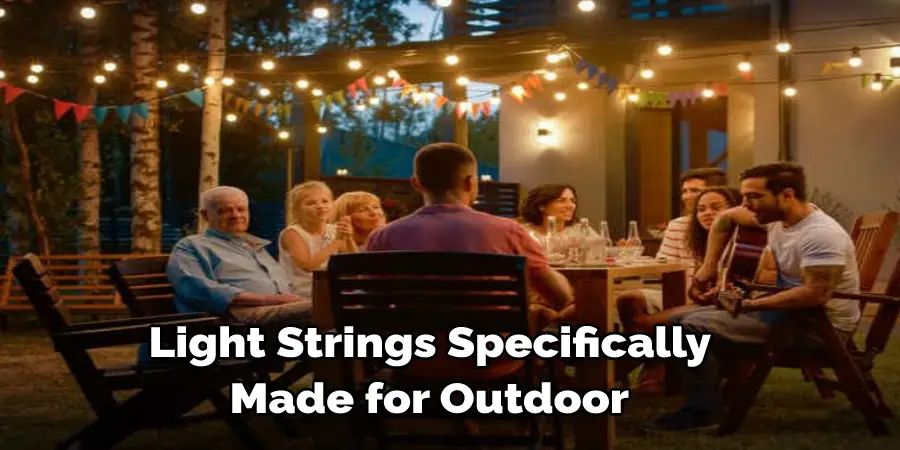
With some planning and some extra safety precautions, you can power your outdoor Christmas lights without an outlet. Just be safe and have fun!
Frequently Asked Questions
How do you run power to Christmas lights?
If you have an outdoor light strand, there are a few basic steps to power it.
1. Make sure the lights are plugged into an electrical outlet that is properly grounded. You should also verify that your light strand is compatible with your home’s electrical system.
2. Find the light strand’s connecting wire(s), and connect them to the appropriate terminals on the power supply.
3. Turn on the power by turning the knob on the power supply to the ON position, or by pulling the plug from the wall socket.
4. Wait a few minutes for the lights to start working, then turn them off by rotating the knob on the power supply or by pulling the plug from the wall socket.
How do I install a light without wiring?
There are a variety of ways to install a light without wiring, including using a light switch, a light cord, or a light fixture. Each method has its own advantages and disadvantages, so it is important to choose the best option for the specific situation.
Using a light switch is the easiest option and is typically the most cost-effective. Switches are typically located near the door or in the hallway, and they allow you to turn on and off lights without having to reach for a wire.
Light cords are similar to light switches, but they allow you to connect multiple lights together without having to run additional wires. This is useful if you want to create a spotlight or other effect that requires multiple lights to be turned on simultaneously.
Light fixtures are the most popular option and can be used to install single or multiple lights. They come in a variety of shapes and sizes, and they are often easy to install thanks to screw-in mounting brackets or clips. Fixtures can also be controlled using a remote control or an electronic switch, which makes them ideal for use in high-traffic areas or other locations where visibility is important.
Can Christmas lights be powered by battery?
Yes, Christmas lights can be powered by battery. Many battery-powered Christmas lights use LED lights, which are more energy-efficient and last longer than traditional incandescent bulbs. In addition, many battery-powered Christmas lights come with timers so you can turn them off at the appropriate time so they don’t waste energy and conserve your battery.
Are there outdoor lights that don’t need electricity?
There are a variety of outdoor lights that don’t need electricity, including solar-powered lights and LED lights. Solar-powered lights use the power of the sun to provide illumination, while LED lights use LEDs (light-emitting diodes) to provide a more natural appearance and longer battery life. Both types of lights are easy to install and can be used in a variety of applications, such as walkways, patios, and gardens.
If you are looking for an affordable and environmentally friendly option for your outdoor lighting needs, consider using one of these alternative lights. By choosing an environmentally friendly option like solar-powered or LED lights, you can help reduce your carbon footprint and help protect the environment.
Conclusion
If you are one of the lucky ones who have an outdoor outlet to use for your Christmas lights, then, by all means, go ahead and plug them in. However, if you don’t have an outdoor outlet or want to be a little bit more creative with your holiday decorating, there are still plenty of ways to run Christmas lights without worrying about an outdoor outlet. We’ve provided some methods on how to run Christmas lights without outdoor outlet so that you can light up your home this holiday season in style. So, have fun and happy decorating!
You can check it out to Waterproof Christmas Lights Connections